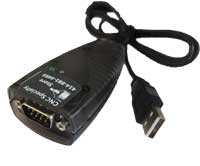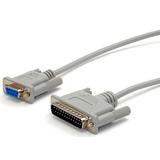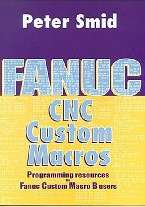Machine Cutting Fluid Coolant Mixing concentration and Treatment Problems and Solutions for industrial machinery
|
What are the functions of cutting fluid?
- It must lubricate properly to reduce friction and the amount of heat generated
- It must also act as an effective coolant to dissipate the heat away from the tooling and part.
|
Different Types of CNC cutting fluids
- Synthetic Oil
- Semi synthetic Oil
- Straight cutting Oils
- Soluble Oils
|
What happens if the coolant concentration is to high or low?
Low coolant concentration
Will cause bad tool life, bacteria growth, rusting of the CNC machine and many other problems.
High coolant concentration
Will cause a kind of barrier between the tooling and the part. When this happens high heat is generated affecting your tool life and puts more heat into the part. This may intern to be harder to keep your part tolerances. Health risks are also associated with the high concentration, including dermatology and respiratory problems.
|
Ripe cutting Coolant smell or odor
The bacteria and smell itself is formed where the coolant layer meets the oil layer.
Generally, the smell of the coolant becomes offensive long before the coolant becomes ineffective. Shops are wasting money by dumping the coolant simply because of the odor. Odor and shortened coolant life also tends to be more problematic with plants or shops in warmer and more humid climates. Many companies will also attempt to control the coolant odor by increasing the concentration. Unfortunately, it will also increase cases of dermatitis.
.
|
Water quality and recommendations
The most important ingredient in a water-based metalworking fluid may be the water. Two shops with identical processes can have different experiences with the same metalworking fluid, because of differences in water quality. One shop gets great results, while the other has serious problems. The coolant foams or forms scum. Oil skimmers or swarf filters do not work well. Parts have poorer surface finishes or contain many other problems.
When charging a system use water treated by deionization or reverse osmosis. Continue to use the treated water for system makeup due to evaporation. Initial charging can sometimes be done with regular tap water.
-Seek advice from others or coolant reps in your area before doing so.
|
Cleaning Machine Sumps
Proper cleaning is vital to high performance and longer coolant life. After the coolant is removed and the tank is cleaned, a type of sump cleaner should be used to circulate and clean the system. A tank filled with contaminants such as metal swarf, oil, mold growth, and bacteria will cause any new fluid added to deteriorate at a much higher rate then normal. Removing these impurities with a thorough clean out procedure will ensure that the fresh fluid can perform and remain at its best.
Procedure for cleaning Machine and coolant
- Drain the entire tank or central system.
- Remove debris from the tank, machine troughs, oil separators, pumps, and filtration units.
- Fill the system with enough water to run pumps. (Use warm water if possible)
- Add a cleaner concentrate and circulate for 2-8 hours. While the cleaner is circulating brush all surfaces of the machine and coolant tank if possible.
- Drain the tank.
- Refill the system with enough water to circulate through so it will be able to remove any remaining cleaner or debris. If the rinse water is extremely dirty, rinse a second time. All lines and sumps should be drained at this time.
- Charge the system with the required amount of water.
- Add fresh metalworking fluid to the recommended concentration. Turn on all coolant pumps and let run for a minimum of 15 minutes to help mix the coolant and water.
|
Coolant Treatment process
Trucks with large reservoirs will visit your shop. It will bring heaters, centrifuges, and other equipment necessary for cleaning and removing fluid contaminants.
The first step is to skim off tramp oil that is floating on top of the dirty coolant tank. The coolant then passes through multiple strainers and filters. The filters gradually filters out small particles and then is heated and pasteurized to remove bacteria and mold. While the coolant is being heated, it is also spun and passes through a centrifuge. It removes whatever tramp oil is left and any metal fines that passed through the filters. The fluid is then cooled and routed to the clean tank. It is tested for concentration and purity. Lastly the coolant is supplemented with additional water, coolant concentrate, and/or biocide as needed to be put in a storage container or back into the machine.
|
Recycling coolant cost effectiveness
In general, coolant recycling is not cost-effective unless the plant disposes at least 1,000 gallons of coolant per month to start to break even. Beyond this, cost savings increase dramatically as you utilize more coolant within your plant.
|
Purchase and disposal costs
The coolant replacement cost generally ranges from $0.20 to $1.50 per gallon. Coolant disposal is $0.10 to $1.20 per gallon. Disposal cost varies due to local regulations, coolant concentration, companies, vendors location, and how much competition there is among the coolant removal/cleaning companies.
|
Common CNC cutting fluids /coolant issues and problems
- Rusty parts, inadequate lubrication, short sump life, excessive foaming, discoloration, and excessive bacterial growth.
- Problems holding part tolerances or dimensions, tapping, surface finish, and shortened tool life.
- Fog, mist, or smoke filled atmosphere.
- Health problems: Rashes or dryness on your hands and arms. Dermatitis and many others.
- Breathing difficulties for your employees.
- Some coolants eat away paint, seals, and other components of your machine tool.
|
Other Contamination causes and Prevention problems
Tramp oil contamination can be caused by poor maintenance with oil coolant separators
What often happens with machine tools is the lube drains into the casting around the way covers and begins to turn into sludge. There is a drainage tube that is supposed to drain the oil and coolant out to a separator. This tube will often clog up. As coolant seeps through way covers and builds up in the trough or way area it will over flow back into the coolant. Taking the way oil with it will speed up the contamination of your coolant.
Steel baffled gravity oil separator is often improperly setup which can cause excessive oil contamination.
Often times the oil separator that comes from the machine tool builder for the way oil and coolant separation, is sometimes improperly set up. Therefore; causing excessive oil in the coolant. The first proper set up involves filling the steel reservoir with coolant. Often times it is just left empty, assuming it will fill up on its own. This is true but the separator will not work very efficient. It Causes both oil and coolant to be dumped back into the sump.
Hydraulic Leaks:
When the hydraulic leaks just add oil to your coolant and increase the deterioration of the cutting fluid.
Questions to ask: Is your maintenance personnel filling hydraulic units?
-There should not be unless there is a leak in the system.
Common CNC machinery cutting coolant and fluids and reviews
|




